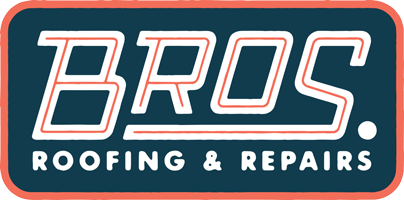Your home's roof is its first line of defense against the elements, and its condition plays a crucial role in protecting your investment and ensuring your safety. Over time, wear and tear can lead to roof problems that, if left unaddressed, could escalate into costly repairs or even replacement. Being able to recognize the signs of a failing roof early can save you time, money, and stress. In this blog post, we'll explore the key indicators that your roof might be in trouble and how to address these issues before they become major headaches.
-
Missing or Damaged Shingles
Shingles that are cracked, curled, or completely missing are a clear sign of roof deterioration. Damaged shingles can expose the underlying layers of your roof to moisture, leading to leaks and water damage.
-
Granule Loss
If you notice granules from asphalt shingles collecting in your gutters or downspouts, it's a sign that the shingles are deteriorating. Granules protect shingles from UV rays and provide fire resistance. Their loss can lead to further degradation of the shingles.
-
Leaks or Water Stains
Water stains on your ceiling or walls are obvious signs of a leak. Pay attention to any water spots, mold growth, or mildew odors, as these can indicate water is infiltrating your home.
-
Sagging or Dipping
A roof should have a straight and even appearance. If you notice any sagging or dipping areas, it's an indication of structural damage that could be due to water accumulation or underlying issues.
-
Increased Energy Bills
A failing roof can lead to poor insulation and ventilation, causing your HVAC system to work harder to maintain a comfortable temperature. If your energy bills have been rising unexpectedly, your roof might be contributing to the problem.
-
Exterior Wear and Tear
Check for signs of wear and tear on the exterior of your roof, such as rotting wood, rusted flashing, or damaged chimney caps. These issues can compromise the integrity of your roof and lead to leaks.
-
Peeling Paint or Stains on Exterior Walls
If you notice paint peeling or stains on the exterior walls of your home, it could be due to water damage from a failing roof. Addressing the roof issue will help prevent further damage to your walls.
-
Moss or Algae Growth
The presence of moss, algae, or even small plants on your roof might look picturesque, but they can actually cause damage. They trap moisture against the roof's surface, leading to premature deterioration.
-
Aging Roof
The age of your roof is a significant factor in its overall condition. Most asphalt shingle roofs have a lifespan of around 20-25 years. If your roof is nearing or exceeding this age, it's a good idea to have it inspected for signs of deterioration.
-
Roof Valleys
Roof valleys, where two sections of the roof meet, are vulnerable areas. If you notice missing shingles, cracked flashing, or an accumulation of debris in these valleys, it's a sign of potential trouble.
-
Daylight Through the Roof
If you can see daylight through your roof from inside your attic, it's a clear sign of roof damage. Sunlight penetration indicates gaps or holes that can lead to water infiltration.
-
Rotting or Moldy Roof Deck
In the attic, check the roof deck for signs of rot, mold, or moisture damage. These issues can compromise the structural integrity of your roof and need to be addressed promptly.
-
Flashing Problems
Flashing is used to seal areas where the roof meets other structures, like chimneys or vents. If you notice damaged or missing flashing, it can create openings for water to enter your home.
-
Accumulation of Debris
Leaves, branches, and other debris can accumulate on your roof and in gutters. This buildup can trap moisture and cause damage over time.
-
Recent Storm Damage
After a severe storm, inspect your roof for visible damage, such as missing shingles or dented metal. Addressing storm-related damage promptly can prevent further problems.
If you notice any of these signs of a failing roof, it's important to take action promptly to prevent further damage and costly repairs. Start by having your roof inspected by a professional roofing contractor. They can assess the extent of the damage and provide recommendations for repairs or replacement.
Regular roof maintenance can help extend the life of your roof and catch issues before they escalate. It's recommended to have your roof inspected at least once a year, and more frequently if you live in an area prone to severe weather conditions.
Investing in a healthy roof not only protects your home and belongings but also provides peace of mind. By staying vigilant and addressing roof issues early, you can ensure the longevity of your roof and maintain the safety and comfort of your living space for years to come.
